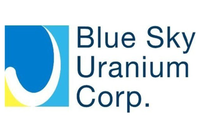Those in the industry have taken the opportunity to promote nuclear energy as a safe and clean power source after Hurricane Irma and Hurricane Harvey.
Hurricane Irma caused widespread flooding and property damage in Florida, but the Sunshine State’s nuclear reactors did not sustain damage.
Florida Power and Light, a subsidiary of NextEra Energy (NYSE:NEE), kept the St. Lucie Nuclear Power Plant running during the storm because it was not directly in Hurricane Irma’s path. One of the company’s reactors at Turkey Point was shut down as Irma approached, and the other shut down automatically because of a valve issue that was unrelated to the storm.
When Hurricane Harvey hit Texas in late August, two of STP Nuclear Operating Company’s reactors continued operating at full power, manned by a crew of 175 that remained onsite. About 44 percent of the reactors are owned by NRG Energy (NYSE:NRG), while 40 percent are owned by the city of San Antonio’s CPS Energy utility; the city of Austin’s Austin Energy owns 16 percent.
STP Nuclear Operating Company operates “under well-defined Nuclear Regulatory Commission guidelines and internal procedures,” and said prior to the storm that it would take steps to safely shut down the units if sustained wind speeds exceeded 73 miles per hour.
However, winds were lower than expected, and the company later shifted its focus to “monitoring for flood or wind-driven rain events.” STP Nuclear Operating Company’s nuclear plant is built with several safety measures, including steel-reinforced concrete containment walls, and it is located inland at an elevation of 29 feet above sea level.
Those two recent extreme weather events have given industry members an opportunity to promote nuclear energy. “[The plants] operated through both of those hurricanes. I mean, can you say the same thing about wind or solar [power]?” said Curtis Moore, Energy Fuels‘ (TSX:EFR,NYSEMKT:UUUU) vice president of marketing and corporate development, during a Monday (September 11) presentation at the Rodman & Renshaw 19th Annual Global Investment Conference.
He added, “nuclear power plants are wonderful things, and right now they provide 20 percent of the electricity in the US and 60 percent of the clean energy in the US.” Moore said increasing demand for electricity and clean energy is sustaining the growth of nuclear energy.
The US has 100 nuclear reactors currently, and two additional reactors are under construction. Few new reactors have been built in the last 30 years, but according to the World Nuclear Association it is expected that four new units will come online by 2021. The two reactors being built are being constructed in Georgia by Georgia Power (NYSE:GPE-A), and will be in service for 60 to 80 years.
Energy Fuels has several uranium mining projects in the US, and operates the White Mesa mill, which is the only conventional uranium mill operating in the US. “Uranium is a clean energy resource. It’s base load, it’s reliable. It operates at high-capacity factors. It offers grid stability. It’s safe,” Moore said.
Click here to read more about uranium mining in the US.
Don’t forget to follow us @INN_Resource for real-time news updates!
Editorial Disclosure: Energy Fuels is a client of the Investing News Network. This article is not paid-for content.
Securities Disclosure: I, Melissa Shaw, hold no direct investment interest in any company mentioned in this article.





